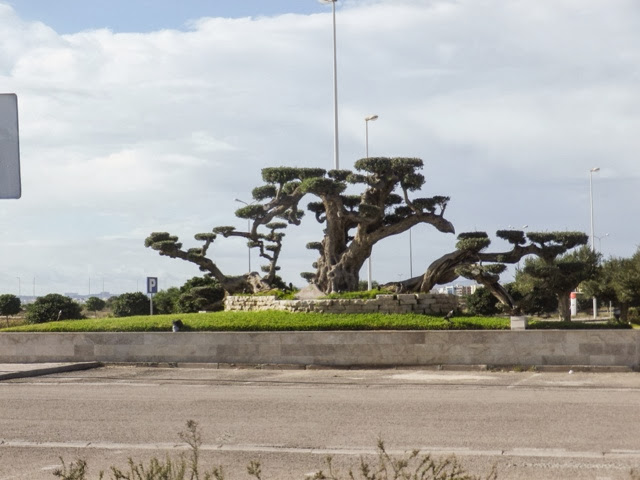If you were following our itinerary you would have picked up that after Valencia we should have sailed to Sardinia. Unfortunately, Sardinia had some very bad weather and subsequently their port was closed. Fortunately, we got to visit Palma, the capital of the Spanish island of Majorca, instead.
Palma is a very beautiful city and in some respects is very similar to Monte Carlo. Because of the change in itinerary we chose to wander around the city on our own.
The harbour is full of some seriously expensive and seriously big yachts. The building you can see on the hill is the Castle of Bellver which apparently was the home of the Kings of Majorca.
From the marina we walked through these beautiful gardens to Le Seu, the Cathedral of Santa Maria.
The cathedral has an interesting history and was built in the 12th century on the site of a pre-existing Arab mosque. It took 400 years to build - a few less siestas and it might have been done a bit quicker!
We visited the cathedral in the morning and the sun was streaming through a round stained glass window with the most brightly coloured red, blue and yellow glass. It left this beautiful rainbow on the pipes of the cathedral's organ.
In the early 1900's the cathedral was damaged by an earthquake. A forward thinking Bishop of the time commissioned Gaudi to redesign one of the cathedral's chapels and this is the result! It is quite a contrast to the rest of the gothic cathedral. There is no crucifix but can you see the image of a body pressed out of the plaster just below the central window.
This hanging, which is above the main altar in the cathedral, was also designed by Gaudi. It's meant to represent the crown of thorns.
This walk way connects the cathedral to the Royal Palace (we think)!
Palma was another city that we really loved and would happily visit again. Sadly this was our last view of the cathedral as we sailed away in the evening!

























































